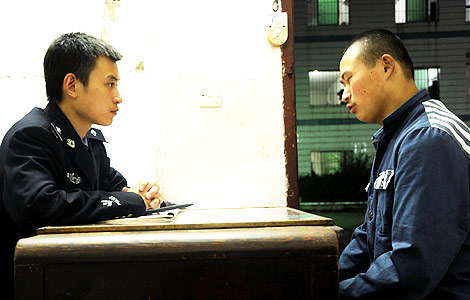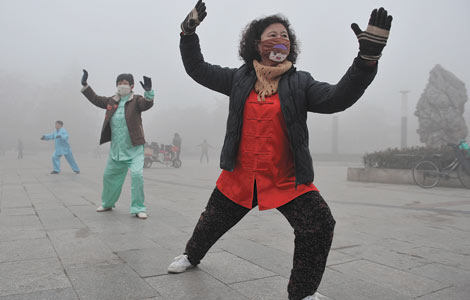An entity of identity
Updated: 2013-12-12 10:28
By Wang Kaihao (China Daily)
|
||||||||
 |
|
Song Aihe, a descendant of a Manchu general of the late Qing Dynasty, shows off his personal collection of antique artifacts from Manchus' daily lives. |
Their descendants, comprising one of the largest Manchu communities in Inner Mongolia, have been exploring various ways to honor the history.
About 10,000 Manchu people live in Xincheng district, one-third of the ethnic group's population in Hohhot. In Inner Mongolia, the Manchu are the second most populous non-Han ethnic group, after Mongolians.
Song rummages through boxes and proudly shows his personal collection of artifacts, which covers almost every aspect of Manchus' daily lives. He is a descendant of a general of the late Qing Dynasty, and he has a great interest in Manchu culture.
"Before, it was easy to collect these items," he recalls. "I used to exchange a kilogram of snacks for a large bag of old everyday stuff. I never took it seriously until 1997 when the collection industry boomed, and I dedicated all my free time to it.
"I only buy them and never sell any," he smiles. "I feel kind of like a collectomaniac, but it's worthwhile. These are visible history."
His daughter's wedding is scheduled for December, and he is busily preparing a Manchu-style ritual, which is known for its complicated process and fine costumes. He says some old items can also be used then.

 Post-baby Duchess
Post-baby Duchess
 Victoria Beckham S/S 2014 presented during NYFW
Victoria Beckham S/S 2014 presented during NYFW
 'Despicable' minions upset Depp's 'Lone Ranger' at box office
'Despicable' minions upset Depp's 'Lone Ranger' at box office
 'Taken 2' grabs movie box office crown
'Taken 2' grabs movie box office crown
 Rihanna's 'Diamonds' tops UK pop chart
Rihanna's 'Diamonds' tops UK pop chart
 Fans get look at vintage Rolling Stones
Fans get look at vintage Rolling Stones
 Celebrities attend Power of Women event
Celebrities attend Power of Women event
 Ang Lee breaks 'every rule' to make unlikely new Life of Pi film
Ang Lee breaks 'every rule' to make unlikely new Life of Pi film
Most Viewed
Editor's Picks

|

|

|

|

|

|
Today's Top News
China safeguarded national interests in 2013
14 terrorists killed in Xinjiang
 Chinese law firm expands in US
Chinese law firm expands in US
Complacency hinders US energy-saving strategies
China plans its Chang'e-5 lunar probe
Dialogue urged after naval incident
Chang'e-3 mission 'complete success'
Cave art's wide influence explored
US Weekly

|

|








